Teaching Visual Grammar in Context to English Language Learners
Have you ever had a student register at your school who came from another country—and their English was surprisingly strong, especially their grammar skills?
It might have surprised you to discover that in many countries, English is taught as a foreign language, with a strong focus on explicit grammar instruction and communicative fluency. Students often learn grammar through sentence patterns, visuals, and repetition—sometimes even before they are exposed to native-level spoken English.
BICS vs. CALP: Why It Matters
Before I dive deeper, let’s talk about the difference between BICS and CALP—two key concepts in ELL education.
BICS (Basic Interpersonal Communicative Skills) refers to social language—playground talk, greetings, informal conversations. This usually develops within 1–2 years.
CALP (Cognitive Academic Language Proficiency) is the language needed to succeed in academic settings—analyzing, comparing, summarizing, and explaining. It can take 5–7 years to develop.
The problem is… most ELLs are expected to master CALP at the same time they’re still developing BICS. All while adjusting to a new country, system, and school culture.
The Real Challenge: Doing It All in Very Little Time
Let’s be honest:
How do we, as ELL teachers, build oral language, teach grammar, phonics, vocabulary, and prep them for mainstream content classes—in just 30–45 minutes a day?
It often feels impossible.
But what if I told you there’s a manageable, research-backed way to build grammar, vocabulary, and communication skills in just 10–15 minutes a day?
Why Your ELLs Need Explicit Grammar Instruction
While some argue that grammar will "come naturally," research shows that explicit grammar instruction is essential, especially for students learning English as a second or additional language.
ELLs benefit most when grammar is:
- Taught in context
- Supported with visuals
- Repeated through multiple modalities
- Connected to meaningful tasks
Visual Grammar in Context ESL Mini Lessons
Here’s a practical solution: implement Visual Grammar in Context Mini Lessons—a series of bite-sized, focused grammar lessons that take just 10–15 minutes and are perfect for pull-out or small-group ESL time.
Want to Try a FREE Subject Pronouns Grammar Lesson and My Unit Plan?
Click here to access a FREE Subject Pronouns lesson and start applying these strategies with your students today!
Example Unit: Subject Pronouns
In this unit, students learn subject pronouns through visuals, repetition, and contextual stories. You can break it down across a few weeks:
Lesson 1: Introduce all subject pronouns in English and connect them to the student’s native language.
Lesson 2: Identify subject pronouns in simple sentences (e.g., “You are from... / I am from…”).
Lesson 3: Match pronouns to images for visual reinforcement.
Lesson 4: Do a word-and-image sort to categorize each pronoun.
Later in the unit: Students read a short, engaging story they can relate to and highlight or circle all the subject pronouns they find.
- Use sentence builders to say things like “She is from Mexico” or “They are students.”
- Introduce fun games like pronoun mazes, sentence puzzles, or interactive matching.
- Fill in missing pronouns in cloze reading.
Each task builds on the last, slowly helping students internalize the grammar, while using real-life, meaningful contexts.
How Can You Teach Grammar in Integrated ENL/Push-In Classes?
If you're supporting English learners in an integrated ENL or push-in setting, grammar instruction can still be meaningful and consistent. When you're working with texts—whether in reading, writing, social studies, or science—build grammar into text-based activities.
Color-coding / Parts of Speech/ Grammatical Structures
Teach students to annotate and color-code texts for parts of speech. For example, during a reading activity, students can highlight all the pronouns in blue, nouns in green, and verbs in yellow. If you’re just beginning the school year and introducing subject pronouns through bite-size minilessons, your students can be “Pronoun Detectives,” searching for them in the text, circling them, and writing them on index cards for review.
As your instruction evolves through the year, you can gradually introduce more complex grammatical structures—and you should revisit them in both your pull-out and push-in lessons. The key is consistency and repetition across contexts.
Even in Kindergarten, students can begin noticing singular/plural nouns and the -s / -es suffix, while in first grade you might introduce the -ing suffix for present continuous tense, and in second grade, the -ed ending for regular past tense verbs. These grammar targets should become part of your daily routine, naturally embedded into literacy and content-area instruction.
Bonus Tips for Success
- Use visuals. Flashcards, illustrations, and real photos help students build connections.
- Offer native language support when possible—let them compare English to their first language.
- Repeat and recycle grammar concepts across stories, games, and writing.
- Celebrate progress! Let students share sentences about themselves and classmates to practice and reflect.
Grammar Doesn’t Have to Be Boring or Isolated
When you teach grammar visually, in context, and in small, digestible steps, you’re not just teaching rules—you’re helping ELLs communicate confidently, understand content, and thrive in their new academic world.
Looking for an easy way to start?
Check out my Visual Grammar in Context resources, ready to print, assign or display on your smart board and use with your newcomers and developing ELLs. Perfect for grades K–12!
Want to Try a FREE Subject Pronouns Grammar Lesson and My Unit Plan?
Click here to access a FREE Subject Pronouns lesson and start applying these strategies with your students today!
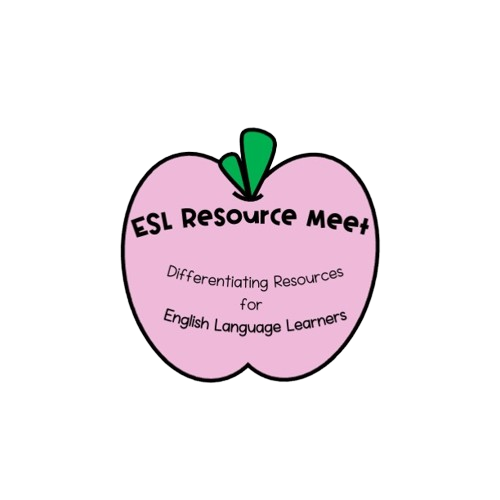





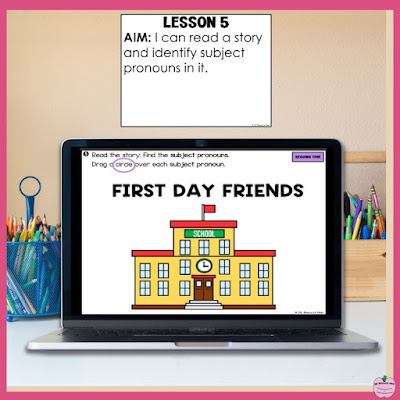








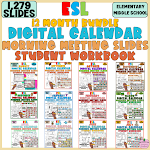




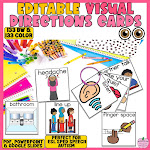




































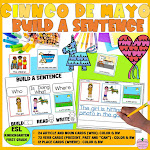







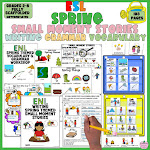




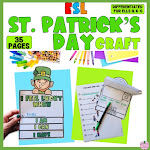
















































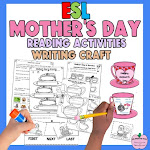
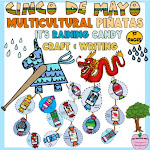
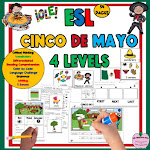
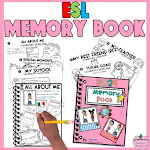




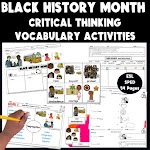



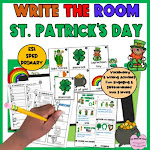
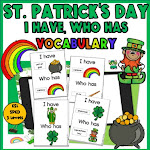
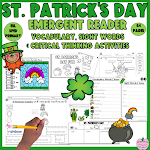



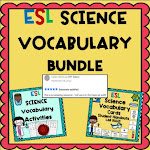




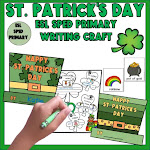

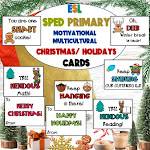


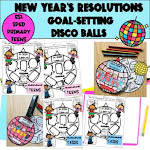
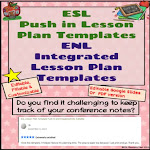




0 Comments